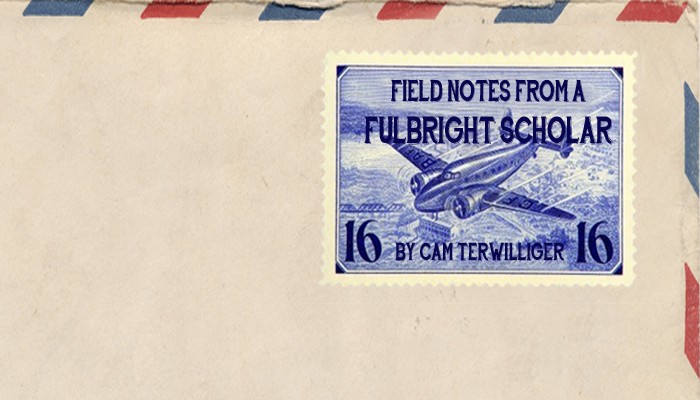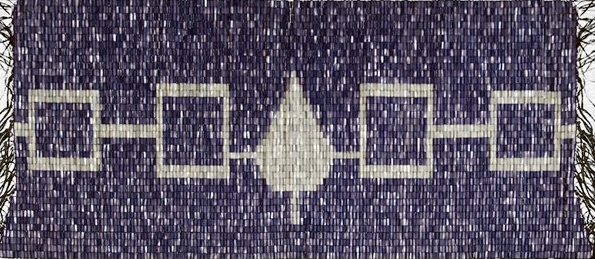Craft
Field Notes from a Fulbright Scholar: In Kahnawà:ke Territory

Since I arrived in Montréal, I’ve been doing research for a novel called Yet Wilderness Grew in My Heart, a book set in 1757 during the French and Indian War. In a nutshell, it explores the panoply of cultures that clashed and combined in northeastern North America, giving birth to the bustling, cosmopolitan region we take for granted today. After months of work, I’ve found the picture to be even more complex than I suspected, involving dozens of native peoples, English, French, and Dutch colonists, as well as a flood of enslaved Africans and indentured servants from Scotland, Ireland, and Germany. Of all these groups, however, it’s been especially thought-provoking to study the Mohawk people, the eastern member of the Iroquois Confederacy, an alliance of six indigenous nations that originated in New York’s Mohawk Valley, the corridor where I-90 runs now.
To learn more about the Mohawks, I take a bus across the Saint Lawrence River every Tuesday to visit the reservation of Kahnawà:ke, a community of 8,000 Mohawks located across the water from Montréal. Composed of two-lane roads lined by modest houses and stores, Kahnawà:ke appears like most small towns until you notice that the stop signs feature the Mohawk word for stop: “testan.” After another moment of looking, you’ll notice many houses and cars fly a distinct purple flag. Featuring a white pine tree flanked by two rectangles to either side, this is the flag of the Iroquois Confederacy, which still unites the modern communities of the Iroquois, found predominantly in New York, Québec, and Ontario.
Near the town center of Kahnawà:ke, you’ll find one of the epicenters of traditional Mo-hawk culture: Kanien’kehá:ka Onkwawén:na Raotitióhkwa Language and Cultural Center. This is where I spend my day, researching in the library and asking the patient staff countless questions. When I first arrived here, I was craving nuts-and-bolts information about Mohawks during the colonial era to make my novel more concrete and historically accurate. I wanted to know: What did they eat? Wear? What did their houses look like? And though I’ve learned a good deal about these things, something else became clear as well: the misalignment between native history and the depiction of native history by contemporary media.

The “Hiawatha Belt” of wampum is the inspiration for the Iroquois Confederacy flag.
During the flood of Westerns that typified the early and mid 20th century, native people almost always played the villains — bloodthirsty barbarians who terrorized innocent white settlers. It’s a relief that this stereotype has fallen by the wayside in recent decades; however, that doesn’t mean natives are always rendered with the complexity they deserve. Many films and novels continue to paint historical natives as noble savages, simplistic people who were doomed to extinction by “progress”: the advanced technologies and societies brought by Euro-American colonists. Essentially, natives are misrepresented as childlike innocents, and it’s due to this “purity” that they are victimized by the complicated and corrupt world of modern “civilization,” a world beyond their understanding.
This romantic but extremely patronizing view was popularized by James Fenimore Cooper in the 19th century with his Leatherstocking novels (the most famous being The Last of the Mohicans). Yet nearly two centuries later, contemporary films espouse the same gauzy mix of idealization and condescension, notable examples being Dances with Wolves and Disney’s recent relaunch of The Lone Ranger (a complicated mess of a movie you can read more about here and here). In the form of what anthropologist Renato Rosaldo calls “imperialist nostalgia,” these films elegize traditional native societies as the relics of humanity’s quaint and primitive past, rather than treating native societies as the true equal of European ones.
The history of the Mohawks and their allies in the Iroquois Confederacy runs completely counter to this harmful depiction. Rather than being guileless primitives, the Mohawks proved to be very shrewd at negotiating the political order created by European imperialism. Trapped be-tween French Canada and the American colonies, the Mohawks found themselves in a dire situation in the 1600s. However, their highly developed government and its strategic approach to diplomacy allowed them to turn this position to their advantage. As tensions between French and English colonists grew, the Mohawks played these rival empires against one another, savvily creating the political agency they needed to protect their people.

18th Century Illustration of an Iroquois Warrior
Everyone knew that whatever empire the Iroquois Confederacy allied with would certainly win if war broke out between France and England in North America. Since the Mohawks held a strong voice in the council procedures of the Confederacy government, this meant that both France and England were continuously courting their favor. However, rather than accepting offers of alliance out of hand, the Mohawks used their position to negotiate. When sending diplomats to the French, they subtly (and sometimes blatantly) insinuated they might ally with Eng-land if treated poorly. When sending diplomats to the English, they suggested the opposite. In the end, the Confederacy would decide to remain neutral in 1701 at a meeting called the “Great Peace of Montréal.” This decision actually resulted in preferential treatment from both empires in the form of trade relationships, as well as promises not to interfere with Confederacy business. It was an insightful foreign policy strategy that kept the Mohawks and their allies in a place of power for over a century after their first contact with Europeans in the early 1600’s. It was only the outbreak of the French and Indian War in 1753 that finally upset the balance they engineered.
This is just one of many stories that gives the lie to current day fictionalizations that depict natives as Edenic people suddenly pushed to extinction by the arrival of European civilizations outside their comprehension. Native people had a sophisticated web of cultures and governments before Europeans arrived. And after Europeans arrived, they were highly capable of adapting to the circumstances brought by each new century. To leave these things out of our film and fiction only creates plots where native people are denied narrative agency. Despite the many hardships inflicted on them, indigenous nations were never simply victims.
From the privileged standpoint of a white American, it’s not my place to speak for native people like the Mohawks. But I do hope new representations of the past both by natives and non-natives will allow us to revaluate our shared history, replacing two-dimensional characters with ones that are at once more accurate, more interesting, and more complex. As all writers know, it’s never too late to reinvent our stories.









